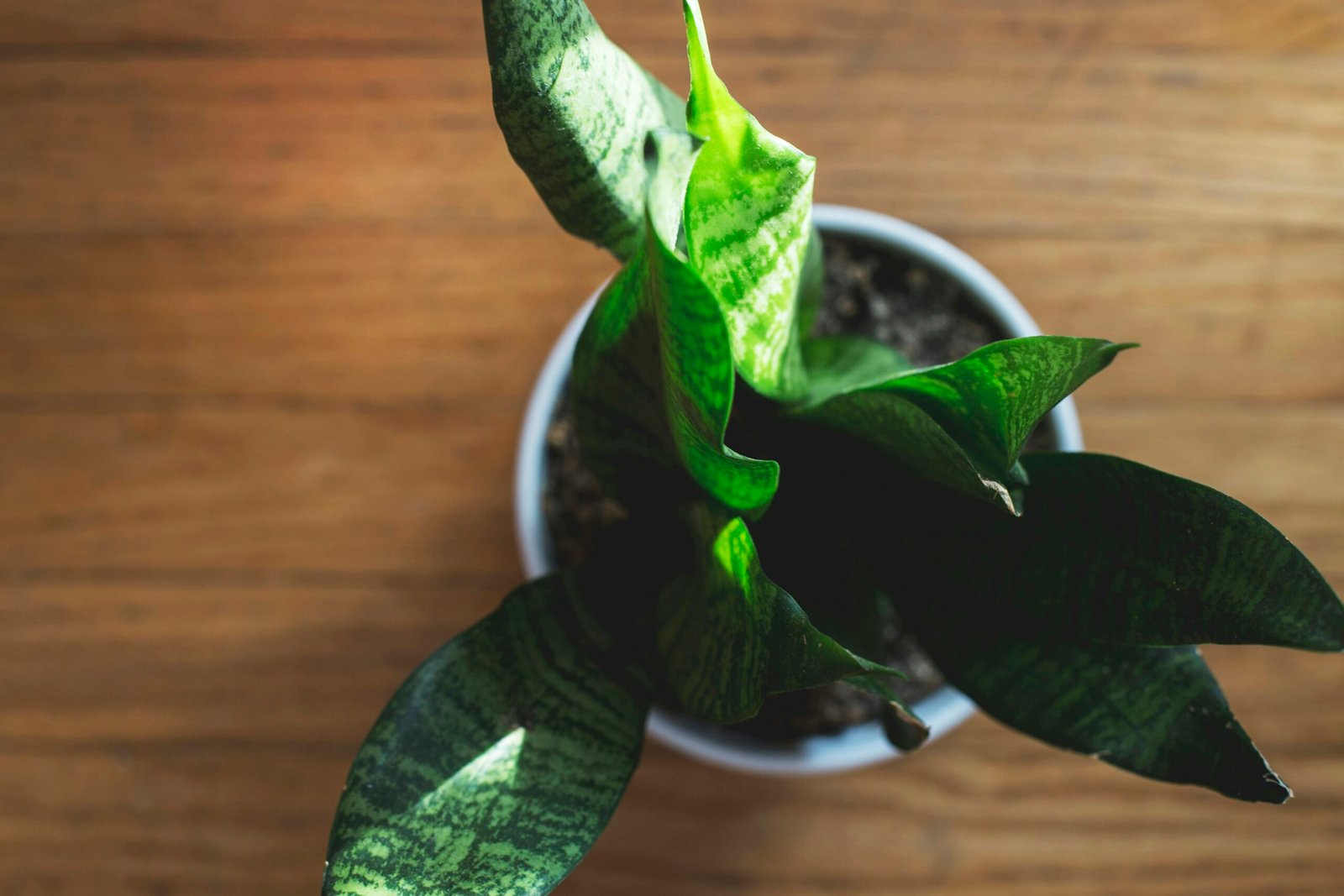Introduction to Snake Plants
Snake plants, scientifically known as Sansevieria or Dracaena trifasciata, are popular houseplants renowned for their striking appearance and resilient nature. Native to West Africa, these hardy evergreen species thrive in a variety of light conditions and can adapt to different environments, making them an appealing choice for both novice and experienced plant enthusiasts. They feature long, upright leaves that are often variegated with shades of green and yellow, adding visual interest to indoor spaces.
One of the most remarkable characteristics of snake plants is their ability to purify indoor air. Studies have indicated that snake plants can remove toxins such as formaldehyde, benzene, and xylene from the air, promoting improved air quality and contributing to a healthier living environment. In addition to their air-purifying abilities, these plants are also known for their unique photosynthesis process, which allows them to absorb carbon dioxide and release oxygen at night. This makes them an excellent addition to bedrooms, where they can enhance air quality while you sleep.
Additionally, snake plants are celebrated for their low maintenance requirements. They are drought-tolerant and require infrequent watering, which makes them ideal for individuals who may not have the time to dedicate to more high-maintenance plant varieties. Their capacity to thrive in low light environments further solidifies their status as one of the best choices for indoor gardening, especially for beginners. With their distinctive aesthetic appeal, air-purifying properties, and ease of care, snake plants can significantly enhance the ambiance of any indoor space while requiring minimal effort from their caregivers.
Essential Care Requirements
Snake plants, scientifically known as Sansevieria, are renowned for their resilient nature and adaptable qualities. Understanding their essential care requirements is vital for promoting healthy growth. One of the primary factors to consider is light. Snake plants thrive in a variety of lighting conditions, from low to bright light. However, they prefer indirect sunlight and can suffer if exposed to direct rays for prolonged periods. This versatility makes them ideal for indoor environments where natural light may be limited.
Watering is another crucial aspect of their care. Snake plants are drought-tolerant and require less frequent watering compared to other houseplants. It is generally recommended to water the plant every 2-6 weeks, allowing the soil to dry out completely between waterings. Overwatering can lead to root rot, which poses a significant risk to the plant’s health. Hence, it’s essential for beginners to familiarize themselves with the frequency and method of watering their snake plants.
Soil type plays an equally important role in maintaining the well-being of snake plants. A well-draining potting mix is ideal, often comprising a combination of potting soil, sand, and perlite. This mixture ensures adequate aeration and prevents water stagnation. Lastly, temperature conditions should be monitored closely. Snake plants prefer temperatures ranging from 60°F to 80°F (15°C to 27°C), making them perfectly suited for indoor lifestyles. They can tolerate slightly cooler temperatures but should be protected from frost.
By adhering to these essential care requirements—optimal lighting, appropriate watering techniques, suitable soil composition, and ideal temperature—beginners can ensure their snake plants remain vibrant and healthy throughout the year.
Common Issues and Troubleshooting
Caring for a snake plant can be relatively straightforward, but even experienced plant enthusiasts may encounter common issues. One of the most frequent problems that arise pertains to watering practices. Snake plants prefer well-drained soil and can suffer from both overwatering and underwatering. Overwatering can lead to root rot, evidenced by yellowing leaves and a mushy root system. Conversely, underwatering typically results in drooping and brown leaf tips. To prevent either of these situations, it is crucial to allow the top few inches of soil to dry out between watering sessions, ensuring a balanced moisture level.
Pests are another concern for snake plant owners. The most common culprits include spider mites and mealybugs. Signs of a pest infestation often manifest in the form of stippled leaves or white, cotton-like masses, respectively. Regular inspection of the plant can help in the early detection of these unwelcome guests. If pests are identified, it is advisable to use a cotton swab dipped in rubbing alcohol to gently eliminate them or apply insecticidal soap. Maintaining good air circulation around the snake plant can also help deter pests.
Additionally, snake plants may be susceptible to certain diseases like fungal infections. These often present as dark spots on leaves, which can indicate that the plant is too damp or crowded. Proper sanitation, such as cleaning leaves and removing any dead or decaying material, can significantly reduce the likelihood of fungal issues. Furthermore, providing adequate light—while avoiding direct sunlight—can strengthen the plant’s overall health. By understanding these common challenges and implementing preventative practices, snake plant owners can effectively care for their green companions.
Propagation and Repotting Tips
Propagation of snake plants (Sansevieria) is a rewarding process that allows you to expand your indoor garden. There are two primary methods of propagation: leaf cuttings and division. Leaf cuttings involve severing a leaf from the parent plant and allowing it to callous for a few days before placing it in well-draining soil. It is crucial to cut the leaf in a way that ensures the new growth will emerge from the base of the cutting, ideally at a 45-degree angle. After placing the cutting in soil, keep it lightly moist and in a warm environment, as roots typically take several weeks to form.
On the other hand, the division method entails carefully separating a mature snake plant into smaller sections, which can be replanted individually. This method is often preferred, as it allows for the immediate establishment of a new plant, often resulting in quicker growth. It is wise to perform this method during the spring or summer when the plant is actively growing, providing the best conditions for the new plants to thrive.
When it comes to repotting, it is essential to assess the plant’s growth and overall health. Generally, snake plants should be repotted every 2 to 3 years, or when the plant has outgrown its pot. Signs that it is time for repotting include roots protruding from the drainage holes or a noticeable decline in growth. When repotting, select a pot that is one size larger and ensure that it has adequate drainage holes. Use a well-draining potting mix, as snake plants are prone to root rot in overly moist conditions.
After repotting, give your snake plant a chance to acclimate. Avoid watering immediately after the process and allow the plant a few weeks to settle in before resuming normal care. Following these propagation and repotting tips will help ensure your snake plant continues to thrive for years to come.





